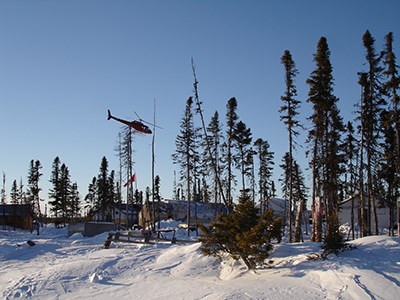The Ontario Chamber of Commerce’s second annual Ring of Fire report card assigned a failing grade of “F” to the federal government for their lack of buy-in to advance mine development in the Far North.
While Ontario has committed $1 billion for mine-related infrastructure development, the chamber said Ottawa “has declined to put funds on the table” which is hurting the investment climate and progress in the James Bay lowlands.
The report’s research, which was spearheaded by Liam McGuinty, son of the former premier of Ontario, blamed the “reluctance of the federal government to make an explicit funding commitment to Ring of Fire infrastructure.”
“Where Are We Now? A Report Card on the Ring of Fire” will be released for public consumption at chamber events in Sudbury on March 11 and Thunder Bay on March 17.
“Despite its significant potential, we are no closer today than we were a year ago to realizing the benefits of the Ring of Fire,” read the executive summary.
Although the report cautions that the intent of the report was “not to point the finger,” the federal government was criticized for not committing funds for mining-related infrastructure.
The chamber lamented the current state of affairs which has seen the departure of Cliffs Natural Resources this past year, leaving the mineral camp without a major mining company capable of spending private capital on infrastructure.
But the chamber also points to other factors in the glacial pace of development including the absence of foundational agreements with First Nations and government permitting delays.
The chamber also is calling for more transparency on the pace and progress made on the First Nations front.
Despite the province signing a framework agreement with the Matawa First Nations tribal group last spring, the chamber remarked it’s largely unknown to the general public if any further progress has been made beyond the signing ceremony.
Creating a climate of “openness” would ease the uncertainty which is hindering the ability of companies operating in the Ring of Fire to raise money.
A quarterly newsletter would help, the chamber said.
One way to push-start development, the report suggests, is to permit mines that are the most advanced. Opening the first mine would “build momentum.”
The report further pointed out that no consideration has been given to how capture value-added processes of converting chromite into ferrochrome, used as an ingredient in stainless steel or how to enter other mining players to enter the Ring.
The chamber said Queen’s Park needs to position the province as the “lowest-cost” producer of chromite in the world, both in transportation solutions and technology.
One barrier that needs to be overcome, the chamber said, is Ontario’s rising cost of electricity and how it’s hurting the competitiveness of business in this province. The chamber recommends making the Northern Industrial Electricity Rate program a permanent fixture.
The report was obviously completed prior to the announcement by Ottawa and Queen’s Park of $732,000 in joint funding for a Ring of Fire road study in early March. The chamber said in order to leverage federal investment, the Ontario government should develop a transportation infrastructure plan through its Ring of Fire development corporation to be presented to the feds to elicit matching funding.




